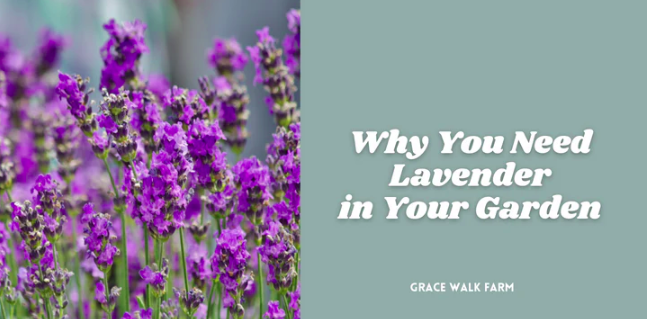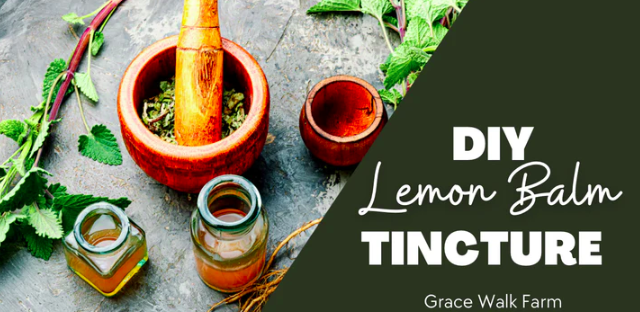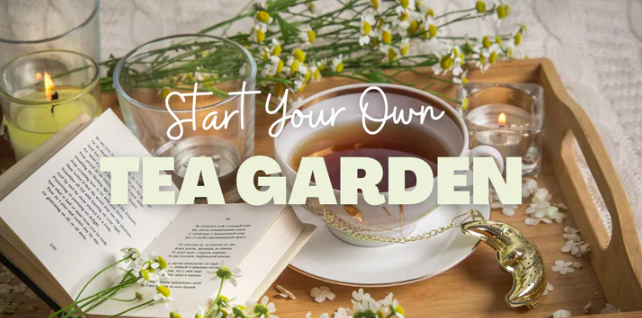Step into a world where stress melts away, and a gentle breeze carries the sweetest scent. Yep, we’re talking about lavender – nature’s own chill pill. Imagine strolling through fields of purple perfection, where every inhale feels like a sigh of relief.
From ancient tales to modern spa vibes, lavender has been the cool kid on the block for centuries. So, grab your metaphorical flower crown as we dive into the soothing, fragrant universe of lavender.
We’ll uncover its not-so-secret secrets, explore how it’s been used across the ages, and find out why it’s not just a pretty plant – it’s pure serenity wrapped in petals.
Welcome to Grace Walk Farm, our family homestead in western NC. We share the highs and lows of our homestead journey, in hopes that it will encourage you to grow your own food too. Click here to grab our Beginner Garden Guide for free! Join our 600K strong Instagram community of homesteaders here. Thanks for stopping by!

Medicinal Benefits of Lavender
Lavender isn’t just a pretty flower – it’s a powerhouse of potential health benefits. From calming the mind to soothing the skin, this aromatic wonder has been cherished for its medicinal properties for ages. Here are some of the top ways lavender can work its magic:
- Relaxation and Stress Relief: Lavender’s scent has a unique ability to calm the nerves and promote relaxation. A whiff of its floral aroma can ease anxiety, reduce stress levels, and even help improve sleep quality. It’s like a mini-vacation for your senses.
- Sleep Aid: If counting sheep isn’t cutting it, try a sprinkle of lavender. Its sedative properties can help you slip into a peaceful slumber. Whether it’s through essential oils, sachets, or a calming cup of lavender tea, this flower’s soothing touch is a natural sleep aid.
- Pain Relief: Lavender’s anti-inflammatory properties can help ease minor aches and pains. Its essential oil can be applied topically to sore muscles, providing a cooling sensation and temporary relief.
- Skin Woes: Got a case of the itchy-scratchies? Lavender’s antiseptic and anti-inflammatory qualities make it a go-to for soothing skin irritations, minor burns, and insect bites. It’s like a gentle hug for your skin.
- Headache Helper: When that pounding headache feels like it’s taking over, a dab of lavender oil on your temples might just save the day. Its calming scent and analgesic properties can help alleviate headache discomfort.
- Digestive Aid: Lavender isn’t just about external comfort – it can help internally too. Lavender tea has been used to aid digestion and soothe an upset stomach, offering relief from bloating and indigestion.
- Hair and Scalp Care: Who knew lavender was a multitasker for your beauty routine? Its essential oil can promote hair growth and improve scalp health. Plus, it leaves your locks smelling divine.
- Mood Boost: Inhaling lavender’s scent can have an uplifting effect on your mood. It’s like a natural pick-me-up when you’re feeling a bit down.
- Respiratory Relief: Lavender’s aroma isn’t just a treat for the nose – it can also help with respiratory issues. Inhaling steam infused with lavender oil might help clear congestion and soothe respiratory discomfort.
Remember, while lavender offers a host of benefits, it’s important to use it in moderation and be aware of any potential allergies or sensitivities. Whether you’re unwinding after a long day or looking for a natural remedy, lavender’s got your back (and your mind, and your skin…)!

How to Grow Lavender
Lavender is a beautiful and versatile plant that can be grown for its fragrance, beauty, and medicinal properties. In this guide, we will cover everything you need to know about growing lavender, including how to choose the best variety for your climate, how to care for your plants, and how to harvest and use lavender for culinary and medicinal purposes.
Step 1: Choosing the Right Variety
Before you can start growing lavender, it’s important to choose the right variety for your climate. There are over 40 different species of lavender, but the most commonly grown types are English lavender (Lavandula angustifolia), French lavender (Lavandula stoechas), and Spanish lavender (Lavandula dentata). English lavender is hardy and well-suited to cooler climates, while French and Spanish lavender prefer warmer temperatures.
Step 2: Planting Lavender
Lavender plants require well-draining soil and plenty of sunlight, so it’s important to choose a sunny location for your lavender bed. Before planting, prepare the soil by adding organic matter and gypsum to improve drainage. Lavender should be planted in the spring or fall, and the plants should be spaced about 12 to 18 inches apart.
Step 3: Caring for Lavender
Lavender plants are relatively easy to care for, but they do require regular maintenance to keep them healthy and productive. Water your plants deeply once a week, and fertilize with a low-nitrogen, high-phosphorus fertilizer in the spring and fall. Lavender plants also benefit from regular pruning, which helps to keep them compact and encourages new growth.
Step 4: Harvesting Lavender
Lavender blooms in the summer, and this is the best time to harvest the flowers for culinary or medicinal use. To harvest lavender, cut the flowers just as they begin to open, using a sharp pair of scissors or pruning shears. Hang the flowers upside down in a cool, dry place to dry, and store them in an airtight container once they are fully dried.
Step 5: Using Lavender
Lavender can be used in a variety of ways, including in cooking, as a fragrance, and for medicinal purposes. English lavender is the best variety for culinary use, as it has a sweet, floral flavor that works well in baked goods and other desserts. French lavender has a stronger, more pungent flavor that is well-suited to savory dishes like stews and marinades.
Lavender is also widely used for its medicinal properties, which include its ability to soothe anxiety, promote relaxation, and alleviate pain. To use lavender for medicinal purposes, try brewing a cup of lavender tea, using lavender essential oil in a diffuser or massage oil, or adding dried lavender flowers to a warm bath.
In conclusion, growing lavender is a rewarding and enjoyable experience that can bring beauty and fragrance to your garden, as well as many other benefits. By choosing the right variety for your climate, planting in well-draining soil, and providing plenty of sunlight and regular maintenance, you can grow beautiful and productive lavender plants that will provide years of enjoyment and usefulness.

The Most Popular Types of Lavender
There are many different kinds of lavender, each with its own unique characteristics and growing requirements. Here are some of the most commonly grown varieties:
English Lavender (Lavandula angustifolia): This is the most popular variety of lavender, known for its fragrant flowers and compact growth habit. It’s hardy and well-suited to cooler climates.
French Lavender (Lavandula stoechas): French lavender has a distinctive “butterfly” shape to its blooms, with colorful bracts on top of the flowers. It prefers warmer temperatures and is less cold-hardy than English lavender.
Spanish Lavender (Lavandula dentata): This variety of lavender has a unique serrated leaf edge, and its flowers have a slightly different shape than English or French lavender. It’s also less cold-hardy than English lavender and prefers warmer temperatures.
Lavandin (Lavandula x intermedia): Lavandin is a hybrid of English and French lavender, and it’s known for its larger flower spikes and strong fragrance. It’s more heat-tolerant than English lavender and is often grown for its essential oil.
Hidcote Lavender (Lavandula angustifolia ‘Hidcote’): This is a popular cultivar of English lavender, known for its deep purple flowers and compact growth habit. It’s often grown as an ornamental plant in gardens.
Grosso Lavender (Lavandula x intermedia ‘Grosso’): This is a popular cultivar of lavandin, known for its long flower spikes and high essential oil content. It’s often grown for commercial lavender production.
Munstead Lavender (Lavandula angustifolia ‘Munstead’): Another popular cultivar of English lavender, known for its fragrant flowers and low-growing habit. It’s often grown in borders or as a low hedge.
These are just a few examples of the many different varieties of lavender that are available. When choosing a variety to grow, it’s important to consider your local climate, as well as the specific characteristics and uses of each type of lavender.
Harvesting and Using Lavender
Harvesting lavender is an important step in maintaining the health and vitality of your lavender plants, and it’s also the first step in using lavender for culinary, medicinal, or decorative purposes. Here’s a step-by-step guide to harvesting lavender:
Timing: The best time to harvest lavender is when the flowers are just starting to open, but before they’re fully open. This is when the flowers contain the highest concentration of essential oils and are most fragrant. In general, this will be in mid-summer, around June or July, depending on your climate.
Preparation: Before you begin harvesting, make sure your tools are clean and sharp. You’ll need a pair of sharp scissors or pruning shears, a basket or bucket to collect the flowers, and a sunny day with no rain in the forecast.
Harvesting: To harvest lavender, simply cut the stems with the flowers attached, leaving about 1-2 inches of stem below the flowers. Cut the stems in the morning, after the dew has dried but before the sun gets too hot. This will help to preserve the fragrance and color of the flowers.
Drying: After you’ve harvested the lavender, you’ll need to dry it before you can use it for culinary, medicinal, or decorative purposes. To do this, tie the stems together in small bundles and hang them upside down in a cool, dry, well-ventilated area, out of direct sunlight. Allow the lavender to dry completely, which can take anywhere from several days to a few weeks, depending on the humidity in your area.
Storing: Once the lavender is completely dry, remove the flowers from the stems by gently rubbing the flowers between your fingers. Store the dried flowers in an airtight container, such as a glass jar or plastic bag, in a cool, dry, dark place until you’re ready to use them.

Lavender Infused Sugar
Here’s a simple recipe for making your own lavender-infused sugar that you can use in baking or as a sweetener in tea or coffee:
Ingredients:
- 1 cup granulated sugar
- 2-3 tablespoons dried lavender flowers
Instructions:
- In a clean, dry jar, combine the sugar and dried lavender flowers.
- Stir well to combine.
- Seal the jar and let it sit for at least a week, shaking the jar occasionally to redistribute the lavender flowers and sugar.
- After a week, strain out the lavender flowers using a fine-mesh strainer or cheesecloth.
- Use the lavender-infused sugar in your favorite recipes, or as a sweetener in tea or coffee

DIY Lavender Candles
Another DIY project you can try with lavender is making your own lavender-scented candles. Here’s how:
Ingredients:
- Soy wax flakes
- Candle wick
- Lavender essential oil
- Dried lavender flowers (optional)
- Candle jar or container
Instructions:
- Melt the soy wax flakes in a double boiler over low heat.
- While the wax is melting, prepare your candle jar or container by attaching the wick to the bottom using a bit of melted wax.
- Once the wax has melted completely, add a few drops of lavender essential oil and stir to combine.
- If desired, add a small amount of dried lavender flowers to the melted wax and stir well.
- Pour the melted wax into the prepared candle jar or container, filling it almost to the top.
- Let the candle cool completely and harden for several hours or overnight.
- Trim the wick to the desired length and enjoy your homemade lavender-scented candle.
These DIY projects are easy and fun ways to incorporate lavender into your daily life.
Also check out these blogs:




